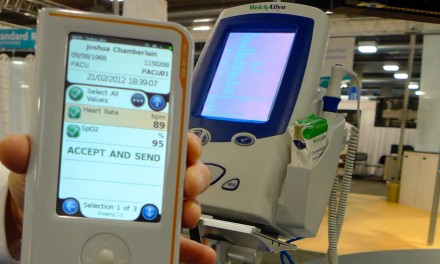Last month I spoke at the first CIS Qatar International Conference in Doha Qatar. My topic was the Importance of Enterprise Wide Medical Device Integration in CIS workflow. You can download a copy of my presentation here.
This was the first such conference in Qatar with over 1,500 people attending. The ballroom only had capacity for 1,200 so they had remote screens and audio for the 300 overflow attendees. Several hospitals in Qatar are in the process of implementing Cerner's EMR, so there is a lot of keen interest in all things EMR.
The conference program was focused on implementation issues and what it takes to realize the benefits of EMR adoption. My presentation provided an overview to medical device connectivity and clinical documentation and introduced use cases as a way to assess current and future workflows to ensure effective workflow automation from medical device connectivity.
Medical Device Connectivity in the Middle East
There were a lot of great HIT and health care thought leaders from the Middle East at the conference. Not surprisingly, the intersection of IT and biomed came up in a number of conversations. In many Middle Eastern countries, numerous hospitals are in development or being constructed. These health ministries that are building hospitals have found ready access to experts to specify and help select HIT solutions and to specify the numbers and types of medical devices needed for the expected patient populations to be served by the hospitals. What is missing is any recognition and resulting planning for HIT and medical device systems to work together smoothly by opening day of a new hospital.
There are two challenges presented by medical device connectivity for new hospital construction. Between conventional HIT and medical device systems lie connectivity workflow automation systems for clinical documentation, alarm notification, clinical decision support systems for things like tight glycemic control, and numerous other such systems. Many of these are rapidly emerging product categories that may be missed by those specifying new hospitals. When specifying connectivity for new hospitals, buyers must be presented with the key workflow automation trade-offs and connectivity specifications to ensure the best possible connectivity solutions are selected.
The the other challenge is the operational gap that occurs when IT shifts from mission-critical to safety-critical operations. Like those the US market, hospitals in the Middle East are still grappling with the convergence of IT and biomed and the fact that what was once a mission-critical IT infrastructure becomes a safety-critical infrastructure with the introduction of medical device systems. Elsewhere, I've referred to this gap as the "governance gap" where current HIT operations must become more rigorous to safely support life-critical medical device systems.
After the new hospital is built and opened, a much bigger challenge arises. Everything pretty much works as specified when it's first installed. But as IT and medical device components and systems are upgraded, discontinued and replaced, and as the physical plant undergoes the inevitable renovation and new construction, a lot of things change - a lot. And the skill sets of personnel and the policies and procedures used to manage HIT operations must be revised to a safety-critical level to maintain adequate levels of productivity and patient safety.
Patient safety is something for which CIOs and hospital IT departments have never been directly responsible. When medical device systems, like patient monitors and infusion pumps, communicate over the enterprise IT infrastructure and are integrated - perhaps interoperable - with HIT applications, patient safety is on the line.




Recent Comments